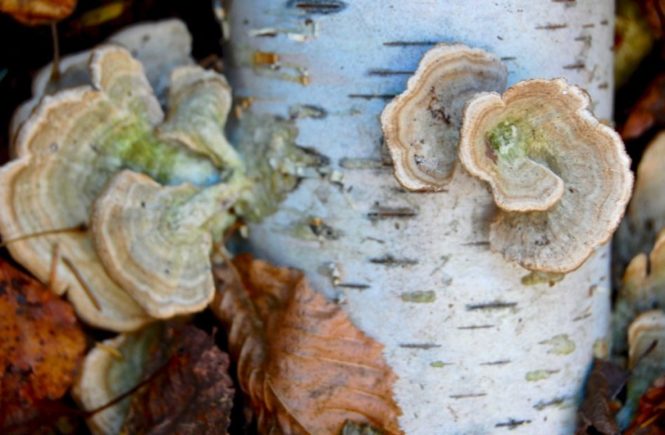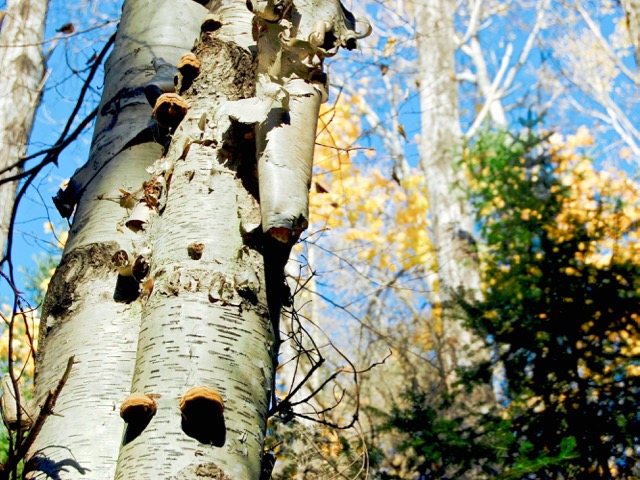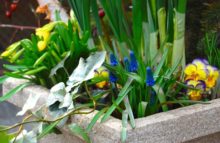| I think these lovelies might be the turkey-tail fungus (Trametes versicolor). You’ll correct me if I’m wrong. |
es is tree fungus. Despite the damage they cause to the forestry industry, I find tree fungi to be fascinatingly decorative. And that’s what today’s blog is all about.
If the way they look weren’t enough to make me love them, fungi generally inspire the most colourful names, as you’ll read in these galleries from Windsor’s Ojibway Nature Centre or Andy’s Northern Ontario Wildflowers. Names like wolf’s milk slime, pixie cups, witch’s butter, or elegant stinkhorn. Tree fungi, too, might be called red brain fungus, artist’s conk, soft slipper toadstool, turkey tail or chicken of the woods. There’s something about them that inspires a kind of perverse poetry.
So come for a walk in the woods with me near Sarah’s country schoolhouse, and we’ll admire them.
 |
| Ms. Internet suggests that this might be more turkey-tail, overlaid with a mist of algae. |
 |
| Could this be chicken of the woods? I don’t know, but it sure is frilly. |
 |
| And here’s the decorative underside of the creature above. |
(If you’re like me
, you might enjoy this great page on how to identify and photograph mushrooms from cell biologist and nature photographer, Dr. Robert Berdan. Some beautiful shots there, too.)






2 comments
Oh pictures of the outdoors…with no snow!
I think the hockey pucks are birch conk…as for the chicken of the woods I think it might be more trametes. (maybe hirsutus?) Not an expert, going off to look in my books.
Great, Eloise, do come back and tell us what you find. Your suggestion of birch conk is close, from what I can see. But to me, the wavy grooves and dark underside look more like tinder conk (Fomes fomentarius), also found on birches and a handy thing for starting fires, apparently. Good to know if you're ever lost in the woods.